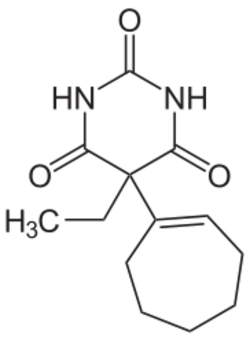| Display title | Chemistry:Heptabarb |
| Default sort key | Heptabarb |
| Page length (in bytes) | 3,240 |
| Namespace ID | 3022 |
| Namespace | Chemistry |
| Page ID | 804719 |
| Page content language | en - English |
| Page content model | wikitext |
| Indexing by robots | Allowed |
| Number of redirects to this page | 0 |
| Counted as a content page | Yes |
| Page image |  |
| HandWiki item ID | None |
| Edit | Allow all users (infinite) |
| Move | Allow all users (infinite) |
| Page creator | imported>JMinHep |
| Date of page creation | 23:28, 5 February 2024 |
| Latest editor | imported>JMinHep |
| Date of latest edit | 23:28, 5 February 2024 |
| Total number of edits | 1 |
| Recent number of edits (within past 90 days) | 0 |
| Recent number of distinct authors | 0 |
Description | Content |
Article description: (description)
This attribute controls the content of the description and og:description elements. | Heptabarb (INN; Eudan, Medapan, Medomin, Noctyn), also known as heptabarbitone (BAN) or heptabarbital, is a sedative and hypnotic drug of the barbiturate family. It was used in Europe for the treatment of insomnia from the 1950s onwards, but has since been discontinued. |

